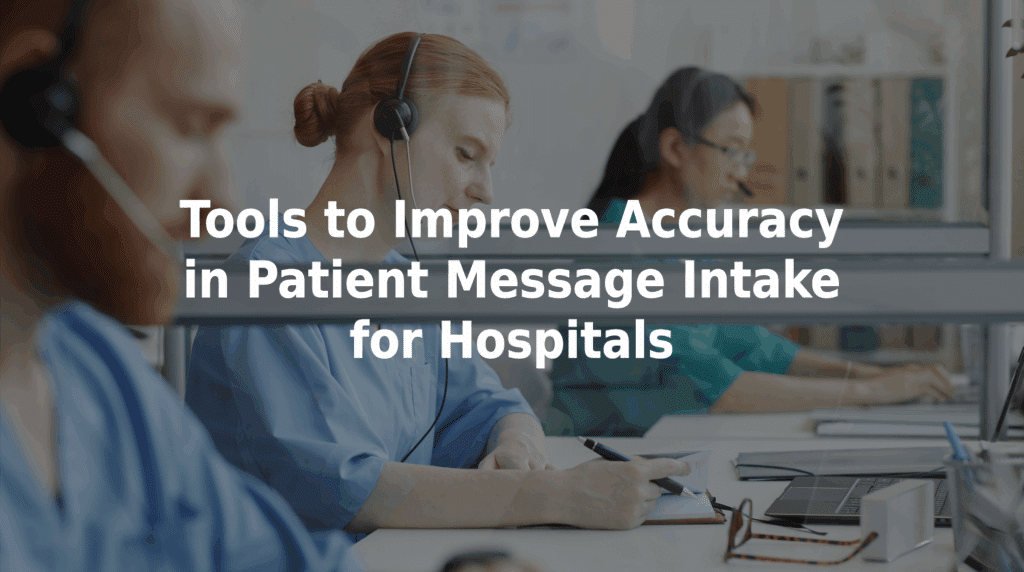Tools to Improve Accuracy in Patient Message Intake for Hospitals
Providers handle a constant flow of patient communication — from post-op concerns to urgent symptoms — often through call centers staffed with nonclinical operators. Without the right tools to improve accuracy in patient message intake for hospitals, there are greater risks for record errors, care delays, and missed urgency. These risks compromise patient outcomes and burden clinical teams with unnecessary follow-up work.
Why Accurate Message Intake Matters in Hospital Settings
Speed and clarity are vital to patient care. A single misreported symptom or missed urgency flag can lead to:
- Delayed treatment of time-sensitive conditions.
- Overlooked escalation to on-call clinicians.
- Breakdowns in continuity of care between departments.
- Increased liability for communication-related adverse events.
HIPAA Journal highlights one investigation that found 7,000 out of 23,000 malpractice lawsuits could be attributed to miscommunication.
Challenges Hospitals Face With Manual Intake
- Operator Variability: Even well-trained staff can differ in how they interpret and log patient messages.
- Time Pressure: High volumes of calls can lead to rushed documentation.
- Free-Text Inconsistencies: Messages recorded in open-ended formats often lack structure, making triage and follow-up harder.
- Delayed Escalations: Nonclinical staff may not know when a message should be flagged for immediate clinical attention.
Recommended Tools to Improve Patient Message Accuracy
Automated Chat Intake
Solutions such as MedMessage Automate allow patients to submit symptoms and requests through a secure chat platform, reducing call volume and operator burden while maintaining message accuracy.
Structured Documentation Templates
Digital forms with required fields and symptom prompts reduce omissions and standardize how messages are captured and routed.
Escalation Logic and Risk Flagging
Built-in logic identifies keywords and symptom patterns that may indicate a serious issue, prompting nonclinical staff to escalate appropriately.
Integrated Review Dashboards
Administrative dashboards allow nurse managers or call center supervisors to review flagged messages before they’re sent to clinical staff, adding a layer of safety and oversight.
Real-Life Scenario: A Stroke Nearly Missed
A 72-year-old woman called her provider to request a refill for vertigo medication. The operator passed along the message as a routine prescription request. A nurse manager reviewed the message and called the patient back, only to discover she had also been experiencing dizziness, headache, and weakness on one side — signs of a potential stroke. The nurse advised the patient to call 911 immediately.
If the original message had included prompts for additional symptoms, the escalation might have happened sooner. This scenario illustrates how structured intake tools can help prevent dangerous oversights in hospital call workflows.
How TriageLogic’s MedMessage Solutions Empower Hospitals
TriageLogic’s MedMessage Automate ensures that medical message requests are complete and accurate by prompting patients through a secure chatbot. This solution reduces strain on nonclinical operators, increases speed to care, and ensures that clinical teams receive the full context needed to make informed decisions.
See How MedMessage Automate Can Benefit Your Hospital
Patient safety starts at intake. If your hospital call center is relying on outdated or manual processes, it’s time to consider smarter, AI-powered solutions like ours! Contact us today to learn more.

